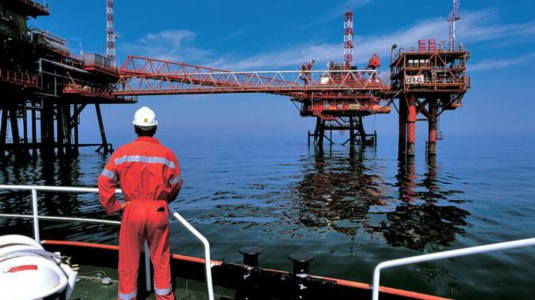Exxon, Petrobras, Equinor: here are those who rely on offshore oil to restart

Exxon, Petrobras, Equinor are some of the names of large oil companies that have decided to bet on offshore oil drilling. All the details
Exxon, Petrobras, Equinor are some of the names of large oil companies that have decided to bet on offshore oil drilling. Once demonized, due to production difficulties and high costs, today oil in deep waters appears to be the second cheapest crude oil in the world after onshore Middle Eastern oil. This is what emerges from an analysis conducted by the consulting firm Rystad Energy .
HOW MUCH OFFSHORE CRUDE COST
According to the analysis conducted by Rystad Energy, the break-even price of Middle Eastern crude oil would be around $ 30 per barrel versus $ 43 per barrel for deep-sea oil.
EXXON BETS ON GUYANA
Exxon was one of the first companies to bet offshore again . It recently announced the latest in a series of discoveries off the east coast of South America in Suriname, alongside Petronas.
The company also announced that Guyana exploration will be among its priority areas in the future, along with US shale, exploration in Brazil and chemicals. This re-prioritization is important as it comes during a time of crisis that effectively forces companies to focus on the most profitable business divisions.
WHAT PETROBRAS DOES
Exxon isn't the only one betting heavily on offshore exploration during the pandemic. Brazilian company Petrobras is planning to focus on deep-sea exploration and production for the next five years, the company said last month, when it also announced a downward revision of its capex program.
The Brazilian company said it will spend $ 55 billion over the next five years, with a 27% cut in its investment plan. Of the total, 84% will go to exploration and production, most of it in the prolific pre-salt zone, which is estimated to contain billions of barrels of undiscovered oil, Reuters reads.
And that's not all: Petrobras also plans to expand to Guyana. While much of the reasons for the Brazilian company's overseas activism are attributable to regulatory obstacles in Brazil, it is equally true that the offshore potential of neighboring Guyana has not gone unnoticed by Brazilians, who share the offshore geological layer in the north of the country. .
THE ACTIVISM OF EQUINOR IN THE NORTH SEA
Meanwhile, in the North Sea, Equinor is pumping more than 400,000 b / d from the Johan Sverdrup field, approaching nearly 500,000 b / d last month, despite the continued decline in demand. The Norwegian company is also ramping up production in the Snorre field, where it has unlocked another 200 million barrels of recoverable reserves, extending the life of the field until 2040. Equinor is fighting natural depletion and fewer new discoveries. But production is increasing despite lower demand for oil both domestically and internationally and forecasts.
THE SITUATION IN THE USA
The US will also encourage further offshore drilling, at least for another month, until the Trump administration changes. The Bureau of Safety and Environmental Enforcement in early December said it will award lower royalties to offshore operators who invest to increase the capacity of their resources. Objective: to maximize the capacity of these fields.
REASONS FOR THE RELAUNCH OF THE OFFSHORE
But what are the reasons for this unexpected relaunch of offshore drilling? During the 2014-2015 oil price crash, offshore oil drilling was one of the hardest hit areas. The offshore drilling companies had gone bankrupt, the exploration projects had been shelved and the staff fired. Then oil companies turned to other ways to cut costs, such as developing technology solutions that would increase drilling efficiency, Rystad Energy explained.
LOSS OF 30 BILLION IN 12 MONTHS FOR OFFSHORE PLATFORMS
Five years after the last crisis, despite the severe blow to the owners of drilling rigs due to the collapse in demand for oil, as an article from Oeedigital recalls , offshore drilling is very much alive and cheaper than ever. The challenges of 2020 have left their mark on the values of offshore platforms with a loss of around 30 billion in just 12 months.
THE EQUAL PRICE OF OFFSHORE OIL FALLS
But according to the Rystad Energy study, the break-even cost of offshore oil fell by about 30% between 2014 and 2018 and is now below the average break-even value of US shale oil. This may not say much since shale is among the most expensive oil resources, but it nonetheless confirms something very important: offshore oil is becoming cheaper to extract.
A GOOD NEWS
In short, this is good news because most of the untapped oil reserves in the world are right offshore and, despite pessimistic demand forecasts, many believe that the world will continue to need millions of barrels of oil over the decades. to come. And in part, if not most of these millions of barrels, will come from offshore fields.
This is a machine translation from Italian language of a post published on Start Magazine at the URL https://www.startmag.it/energia/exxon-petrobras-equinor-ecco-chi-punta-sul-petrolio-offshore-per-ripartire/ on Sun, 03 Jan 2021 07:28:55 +0000.
